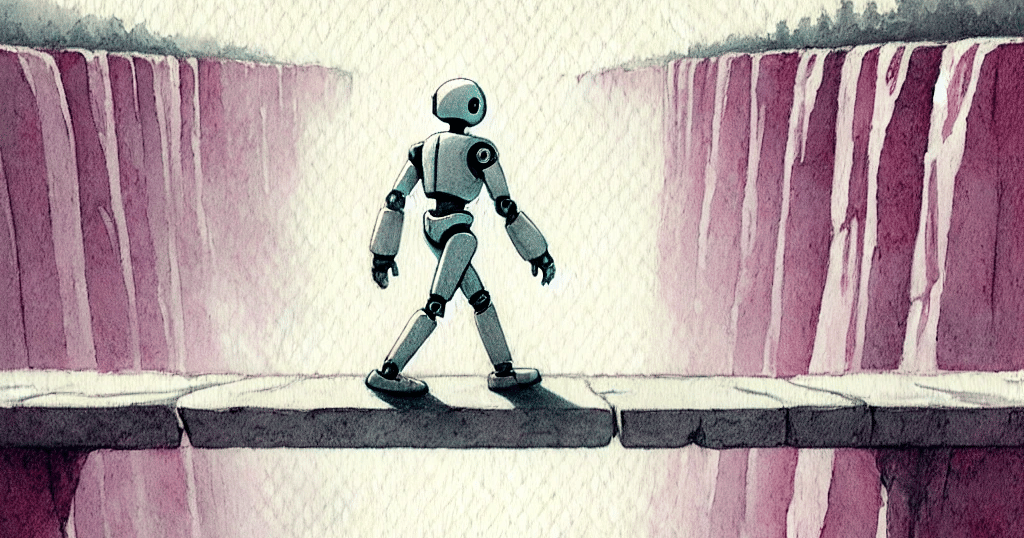- AI Impact Frontier
- Posts
- AI to improve Enterprise Efficiency - possible, but full of traps
AI to improve Enterprise Efficiency - possible, but full of traps
You will need to rethink how work gets done to get the full value

Companies are eager to apply AI, and many choose efficiency (often for cost reduction, but not always) use cases. The allure is understandable. It’s easy to imagine: make the current process 20% more efficient by automating X. It’s often easy to measure as well as the process already exists. It’s relatively easy to create a business plan: most of the inputs are known, and the efficiency improvement factors can be derived from some sort of Taylor-style experiment (with or without AI)
Yet, achieving real value is harder than it seems. There are four common paths, but only the first two create transformational value, while the last two approaches are more likely to become traps.
Success Path 1:
A use case for a thousand people who all do the same job
Typical archetype: Contact Centers
Key Requirements:
Massive scale: - hundreds or, ideally, thousands of people. Anything smaller and business inevitably ends up with smaller effective groups where savings might be a fraction of a person. For example, having 50 people across a few geographies and products results in an effective group of 5-ish, and saving even 10% of total work time results in savings of half an FTE per group
Same job: If the job is the same, then an Enterprise can build one tool that can be deployed to all of them. Ideally, the total number of tasks entailed is low, so even a few tasks add up to a meaningful share of time. This typically means that one is focusing on simpler jobs
Key to success: Effectively automating, ideally with AI agents, a large enough task with very high accuracy. Today, this requires some proprietary engineering, but it may change as productized agents become more powerful.
Public example: Contact centers like Klarna exemplify this scenario, which is why that story resonated with Enterprise executives. They were able to transfer 2/3 of customer service with AI Agents.
Success Path 2:
Re-imagine How the Work Gets Done
Typical Archetype: Marketing Departments
Key Requirements:
Willingness to Disrupt Existing Processes: Organizations must be open to thoroughly deconstructing and redesigning current workflows to leverage AI capabilities.
Diverse and Complex Roles: Many different roles collaborate, often imperfectly, resulting in “hurry, hurry, wait” dynamics or sub-optimal outputs.
Key to Success:
Process Re-engineering Expertise: Ability to break down jobs into individual tasks and reorganize them in ways that optimize AI integration.
Change Management Skills: Strong leadership and communication to navigate organizational shifts and address resistance to change.
Customized AI Solutions: Develop or adopt flexible AI tools that can handle various tasks across different roles.
Example: In my experience, some processes can be 20-40% more efficient when the work is redesigned
Only some companies have a domain where Path 1 is applicable, and most are unwilling to engage in the hard work of Path 2. As a result, companies pursue the two other paths.
However, the remaining two paths are actually traps: The trap of incrementalism (Path 3) and the Trap of micro-productivity (Path 4)
Modest Success Path 3: Deploy a constellation of use cases to an existing workflow
Typical Archetype: Sales departments
Companies adopt a lot of tools for their main sellers (e.g., sales co-pilots, business development agents, etc.) and usually from their existing vendors
Results, when successful, often result in efficiency gains of 5-10%. Even that is hard because two things need to be in place:
Change management to get people to use new tools
An explicit process to capture efficiencies gained, such as a concrete next-best task for workers to do with the extra time
Few folks do these two things, so the actual results end up having less than 5% impact on the bottom line
We refer to this path as the trap of incrementalism because an Enterprise marginally improves the existing process by making some elements more efficient. An Enterprise sees a small benefit, but it’s a local optimum, not a global one. It falls short of the great AI Expectations.
Disappointing Path 4: Deploy a few easy off-the-shelf use-cases broadly
Typical Archetype: Entire organizations deploying horizontal co-pilots
Individuals may see some efficiency gains at best, but the organization sees no benefit. It’s too little, too broad. It’s also too reliant on employees figuring out how to get the benefit and being proactive enough to use gained time in a productive way that benefits the organization.
We refer to this path as the trap of micro-productivity because a few employees see small productivity benefits, and they get an extra cup of coffee or even an extra golf game, but the small pockets of productivity don’t benefit the organization as a whole.
Conclusion
AI can greatly improve efficiency, but it’s not easy. Most companies have very few Path 1 opportunities, which are easier to get. They do have many Path 2 opportunities, but they require hard organizational work. Unfortunately, paths 3 and 4 are the most common, where the AI technology expense is real, but the benefit isn’t.
If you want AI-enabled efficiency, you will most likely need to rethink how work gets done with AI in the loop to overcome the traps of incrementalism and micro-productivity. This is not new. Something similar played out during the transition from steam to electric power a hundred years ago.